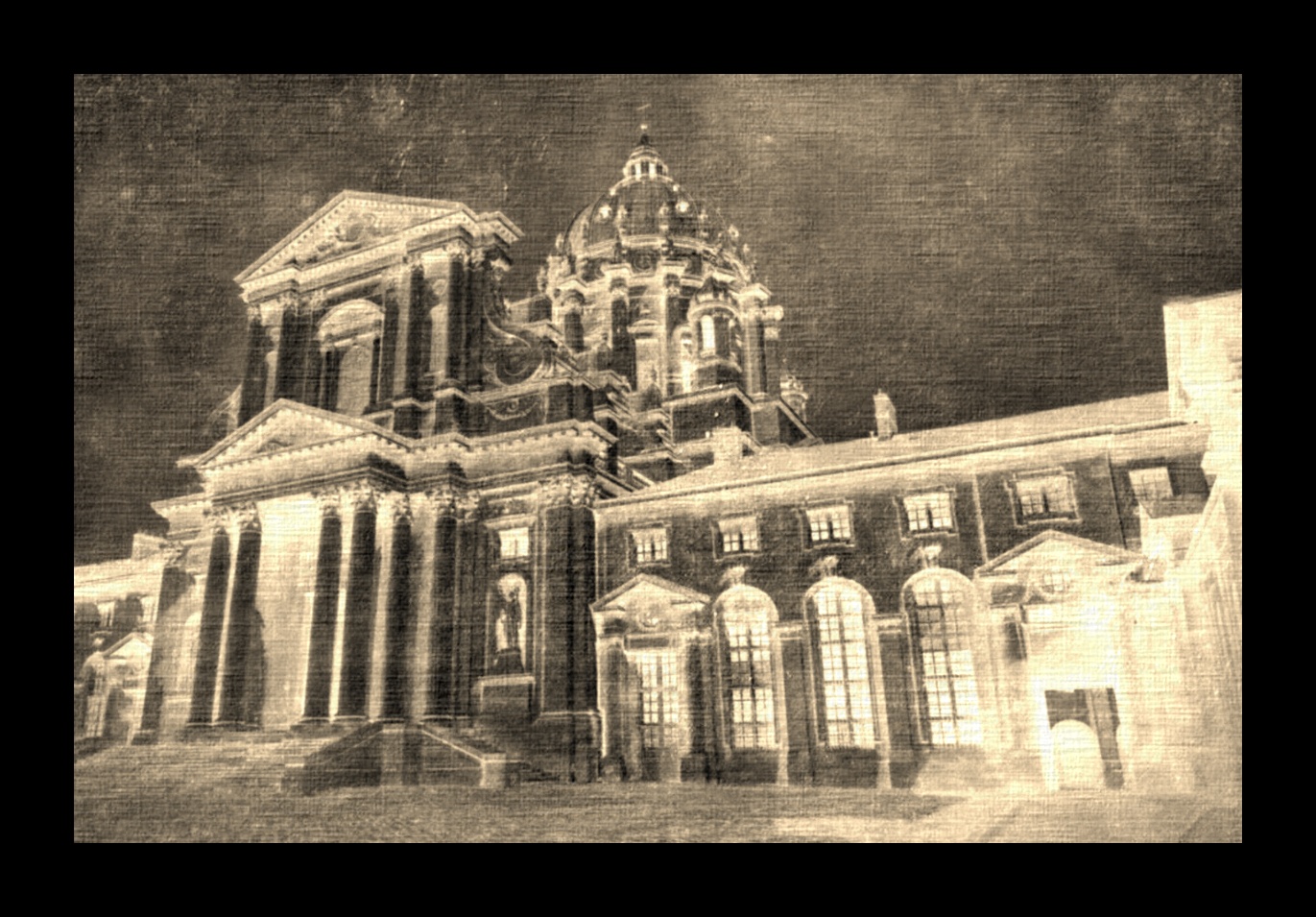Val de Grace Hospital

The inception of Val de Grâce dates back to 1621 when Queen Anne of Austria, the devoutly Catholic wife of King Louis XIII, set up a Benedictine convent in the Faubourg St-Jacques district, along the famous pilgrimage route, Saint Jacques de Compostelle (aka El Camino or Way of St-. James). Married for 23 years without an heir, she vowed to build a magnificent church if God gave her a son.
After the birth of Louis XIV in 1638, she asked the royal architect François Mansart to build the Val-de-Grâce Royal Abbey and Church. The first stone was laid in 1645, and when the Baroque church with its grand dome and elaborate sculptures was completed in 1667, it was considered a symbol of royal piety and architectural brilliance.
Mansart’s magnificent dome houses a fresco of celestial scenes by Pierre Mignard, “The Glory of the Blessed”. Equally stunning is the baldachin designed by Gabriel Le Duc, an ornate structure over the high altar reminiscent of the one in Saint Peter’s Basilica in Rome. The historic Cavaillé-Coll organ, originally from the Panthéon, was installed in the church in 1891, and still used today for classical concerts as well as liturgical services
The church of the Val-de-Grâce, designed by François Mansart and Jacques Lemercier, is considered by some as Paris's best example of baroque architecture (curving lines, elaborate ornamentation, and harmony of different elements). Construction began in 1645, and was completed in 1667.
The Benedictine nuns provided medical care for injured revolutionaries during the French Revolution, and thus the church at Val-de-Grâce was spared much of the desecration and vandalism that plagued other, more famous Paris churches (for example, Notre-Dame was looted and turned into a warehouse, and Saint-Eustache was used as a barn). As a result, the church's exquisite interior is one of the few unspoiled remnants of Paris's pre-Revolution grandeur. Following the Revolution, the buildings were converted into a military hospital. The Abbey’s Transition to a Military Hospital Like many religious institutions, Val-de-Grâce was seized and secularized during the French Revolution. While the church was spared, the abbey was transformed into a military hospital in 1793, its substantial buildings and central location ideal for treating soldiers wounded during the decade of conflicts known as the French Revolutionary Wars (1792-1802).
With the addition of a military medical school in 1850, the prestige and importance of Val-de-Grâce only continued to grow as their services supported the armed forces in wars throughout the 19th and 20th centuries.
Val-de-Grâce produced some of history’s greatest military doctors, surgeons, and medical researchers. For example, the Army’s Chief Surgeon Dominique-Jean Larrey is considered the father of emergency medicine, with his pioneering use of mobile surgical ambulances on the battlefield during Napoléon I’s campaigns. And it was one of the epidemiology physicians at Val-de-Grâce, Dr. Hyacinthe Vincent, who developed the vaccine against typhoid fever in 1910 which proved crucial in protecting the French, British, and US troops from severe outbreaks during World War I.
The hidden background to this is that the Ventrue were playing pawns with Carla Gagnon
Late 20th Century
Currently, the original buildings only serve for offices and teaching facilities (École d'application du Service de santé des armées); the actual medical facilities are inside a large modern building to the east on the same grounds.
The present-day hospital was built in the 1970s and completed in 1979. It has a capacity of 350 beds, in various specialties. The hospital is accessible to military personnel in need of medical aid as well as to any person with health coverage under the French social security system. It is famous for being the place where the top officials of the French Republic generally get treated for ailment.
The statue standing in the courtyard is that of Dominique Jean Larrey (as sculpted by David d'Angers in 1843), who was Napoleon's personal surgeon and innovator of the concept of battlefield triage.
The old abbey alongside the church is now a museum of French army medicine. Tours of the museum and church are available for a small fee (being a military facility, the grounds are under military guard and tourists are escorted). Cameras are not permitted except for inside the church itself.